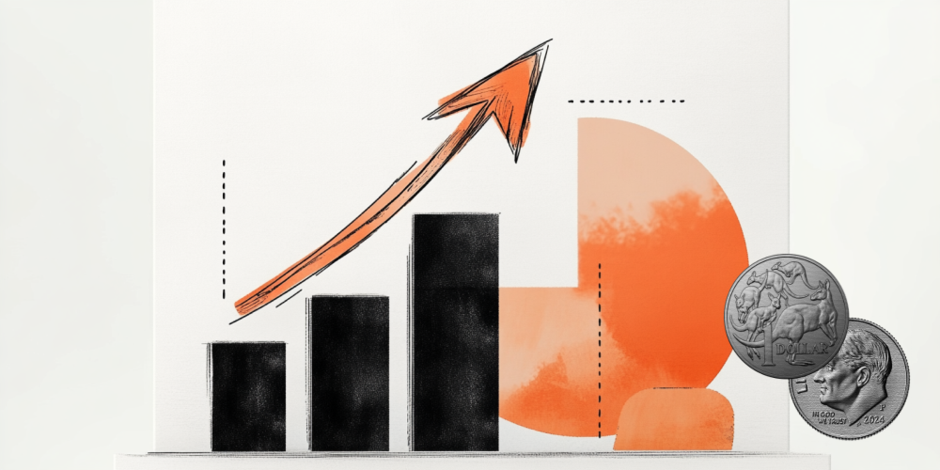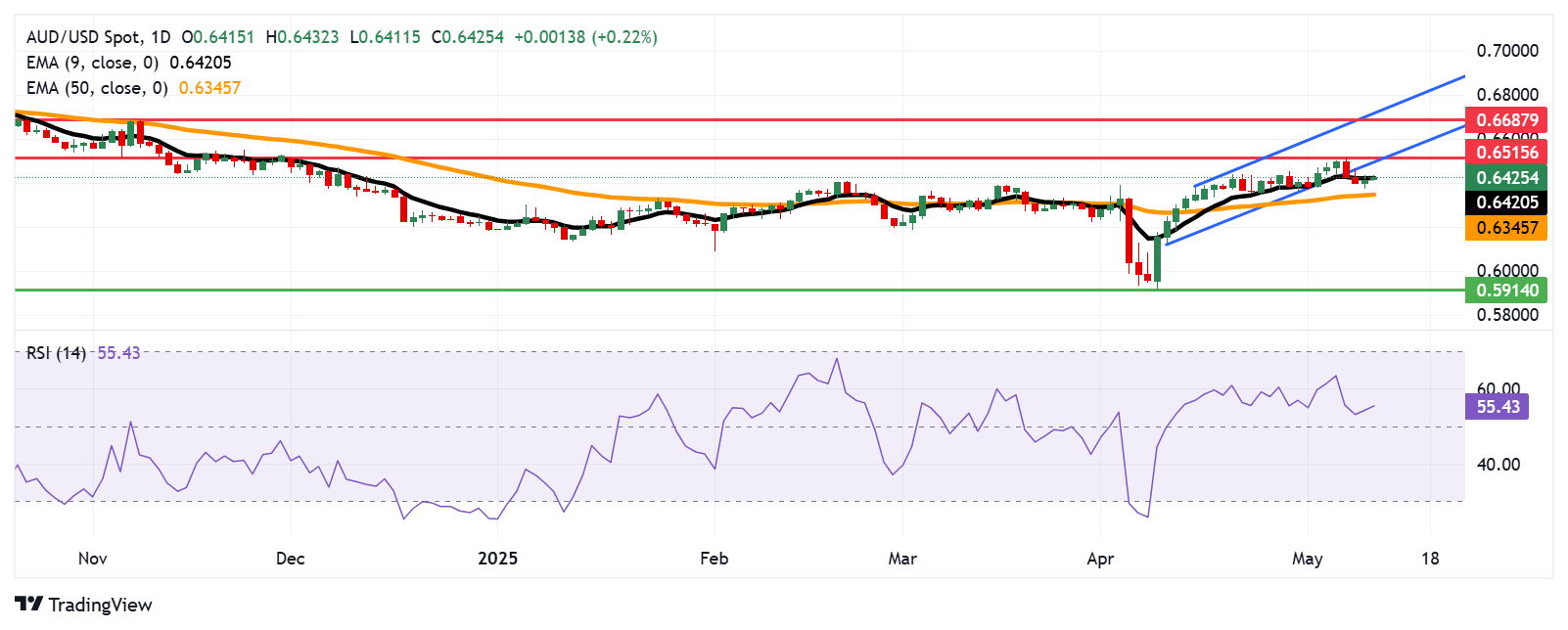Created
: 2025.05.12














![]() 2025.05.12 11:46
2025.05.12 11:46
The Australian Dollar (AUD) is building on its recent momentum, rising against the US Dollar (USD) for a second straight session on Monday. The AUD/USD pair is benefiting from growing optimism around the US-China trade talks held in Geneva. As Australia maintains strong economic ties with China, developments in the Chinese economy often have a direct influence on the AUD.
After two days of negotiations aimed at easing trade tensions, both the US and China reported "substantial progress." China's Vice Premier He Lifeng described the talks as "an important first step" toward stabilizing bilateral relations. Meanwhile, US Treasury Secretary Bessent and Trade Representative Greer called the discussions a constructive move toward narrowing the $400 billion trade imbalance.
Adding to the focus on China, President Xi Jinping is set to speak at the opening ceremony of the fourth ministerial meeting of the China-CELAC Forum in Beijing on May 13.
Looking ahead, traders are eyeing key Australian economic releases, including May's Westpac Consumer Confidence and April's NAB Business Conditions, both scheduled for Tuesday, which could offer fresh cues for the AUD. Investors are also focused on upcoming US data, with consumer inflation figures due Tuesday, followed by Retail Sales and Producer Price Index data on Thursday, as they gauge the early impact of the trade dispute on the broader economy.
The AUD/USD pair is trading around 0.6420 on Monday. The technical analysis of the daily chart suggests a neutral bias as the pair has maintained its position below the ascending channel pattern. However, the 14-day Relative Strength Index (RSI) remains comfortably above 50, suggesting bullish bias is still in play.
On the upside, the AUD/USD pair could return to the ascending channel and retest the six-month high at 0.6515, reached on December 2, 2024. A break above this level could support the pair to approach the seven-month high of 0.6687, which was reached in November 2024. Further support appears at the upper boundary of the ascending channel around 0.6730.
The AUD/USD pair is testing its initial support at the nine-day EMA at 0.6420, followed by the 50-day EMA at 0.6345. A breach below these levels could weaken the bullish outlook and may expose the pair to 0.5914, the lowest since March 2020.

One of the most significant factors for the Australian Dollar (AUD) is the level of interest rates set by the Reserve Bank of Australia (RBA). Because Australia is a resource-rich country another key driver is the price of its biggest export, Iron Ore. The health of the Chinese economy, its largest trading partner, is a factor, as well as inflation in Australia, its growth rate and Trade Balance. Market sentiment - whether investors are taking on more risky assets (risk-on) or seeking safe-havens (risk-off) - is also a factor, with risk-on positive for AUD.
The Reserve Bank of Australia (RBA) influences the Australian Dollar (AUD) by setting the level of interest rates that Australian banks can lend to each other. This influences the level of interest rates in the economy as a whole. The main goal of the RBA is to maintain a stable inflation rate of 2-3% by adjusting interest rates up or down. Relatively high interest rates compared to other major central banks support the AUD, and the opposite for relatively low. The RBA can also use quantitative easing and tightening to influence credit conditions, with the former AUD-negative and the latter AUD-positive.
China is Australia's largest trading partner so the health of the Chinese economy is a major influence on the value of the Australian Dollar (AUD). When the Chinese economy is doing well it purchases more raw materials, goods and services from Australia, lifting demand for the AUD, and pushing up its value. The opposite is the case when the Chinese economy is not growing as fast as expected. Positive or negative surprises in Chinese growth data, therefore, often have a direct impact on the Australian Dollar and its pairs.
Iron Ore is Australia's largest export, accounting for $118 billion a year according to data from 2021, with China as its primary destination. The price of Iron Ore, therefore, can be a driver of the Australian Dollar. Generally, if the price of Iron Ore rises, AUD also goes up, as aggregate demand for the currency increases. The opposite is the case if the price of Iron Ore falls. Higher Iron Ore prices also tend to result in a greater likelihood of a positive Trade Balance for Australia, which is also positive of the AUD.
The Trade Balance, which is the difference between what a country earns from its exports versus what it pays for its imports, is another factor that can influence the value of the Australian Dollar. If Australia produces highly sought after exports, then its currency will gain in value purely from the surplus demand created from foreign buyers seeking to purchase its exports versus what it spends to purchase imports. Therefore, a positive net Trade Balance strengthens the AUD, with the opposite effect if the Trade Balance is negative.
![]()
Created
: 2025.05.12
![]()
Last updated
: 2025.05.12

FXStreet is a forex information website, delivering market analysis and news articles 24/7.
It features a number of articles contributed by well-known analysts, in addition to the ones by its editorial team.
Founded in 2000 by Francesc Riverola, a Spanish economist, it has grown to become a world-renowned information website.
We hope you find this article useful. Any comments or suggestions will be greatly appreciated.
We are also looking for writers with extensive experience in forex and crypto to join us.
please contact us at [email protected].
Disclaimer:
All information and content provided on this website is provided for informational purposes only and is not intended to solicit any investment. Although all efforts are made in order to ensure that the information is correct, no guarantee is provided for the accuracy of any content on this website. Any decision made shall be the responsibility of the investor and Myforex does not take any responsibility whatsoever regarding the use of any information provided herein.
The content provided on this website belongs to Myforex and, where stated, the relevant licensors. All rights are reserved by Myforex and the relevant licensors, and no content of this website, whether in full or in part, shall be copied or displayed elsewhere without the explicit written permission of the relevant copyright holder. If you wish to use any part of the content provided on this website, please ensure that you contact Myforex.
Myforex uses cookies to improve the convenience and functionality of this website. This website may include cookies not only by us but also by third parties (advertisers, log analysts, etc.) for the purpose of tracking the activities of users. Cookie policy